Ravenshead - Thieves' Wood
w/e 19 February 2006
All this week's pictures were taken
with a Kodak DX6490
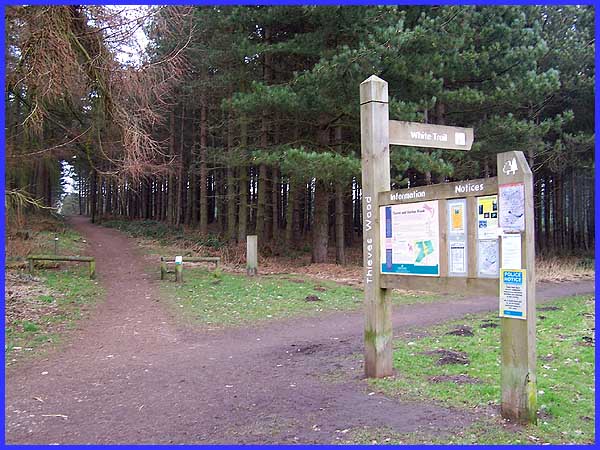
For this walk we attempted to follow a route through a 'remnant
part of Sherwood Forest' as described in the 1997 publication
of Malcolm Sales' "100 Walks in Nottinghamshire". The
start of the walk was fine, beginning as described in the book
by the 'sign indicating a choice of waymarked walks' and even
the map on the information board showed a Blue Trail and a White
Trail. It was not until we returned here though that we noticed
that the sign pointing to the blue route to the left had been
either removed or broken off!
|
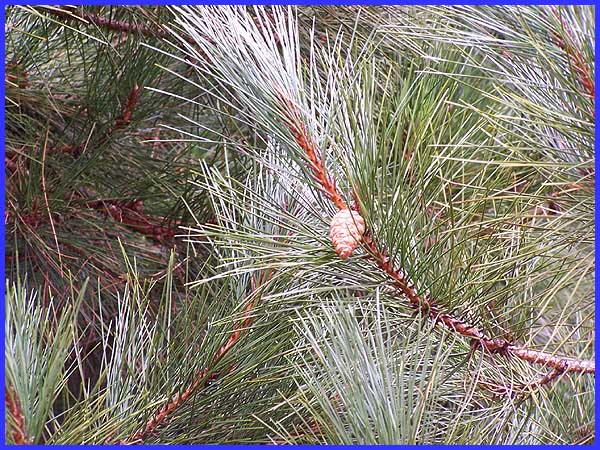
The predominant species of tree in Thieves' Wood is pine and
whilst many of the trails and paths through the area were littered
with pine cones some of the trees still had cones clinging to
their branches.
|
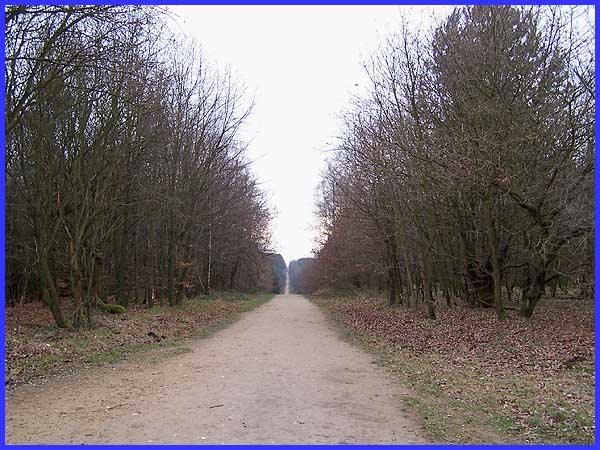
Initially the route was easy to follow although it did direct
us to look for blue and white painted wooden posts and the only
ones we saw had only white paint of them. We did find a long
broad lane though running straight as an arrow through the trees.
(One of Robin Hood's arrows no doubt). This lane is known as
The King's Way and it was once the main route between the castles
at Nottingham, Tickhill and Bolsover. This view above is looking
in the direction of Nottingham. In fact many years ago, it was
trees from these woods that were used in the construction of
the castle at Nottingham but since that time the woods have been
left virtually untouched and they are now managed by the Forestry
Commission. Some restocking of the trees has had to been undertaken
in recent years by the Commission following a devastating storm
in 1976.
|
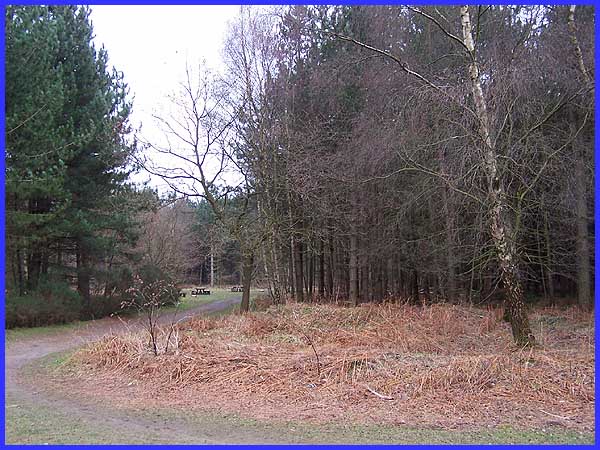
Due to the lack of blue-topped posts and the multiplicity of
tracks and paths through the forest, the route as described in
Mr Sales' book was becoming more and more difficult to follow
but he does mention a picnic area and we found this right in
the heart of the forest. Publicity material about Thieves' Wood
mentions 'many different species of flora and fauna' and 'the
abundant wildlife' but for much of the walk we were struck by
the eerie stillness and what is best described as a deafening
quietness. No rustle in the undergrowth, no bird song, nothing!
It was only here on our way back at the picnic area that we saw
squirrels, blue tits and robins. They are obviously clever enough
to realise that where humans gather, there is a free meal to
be had.
|
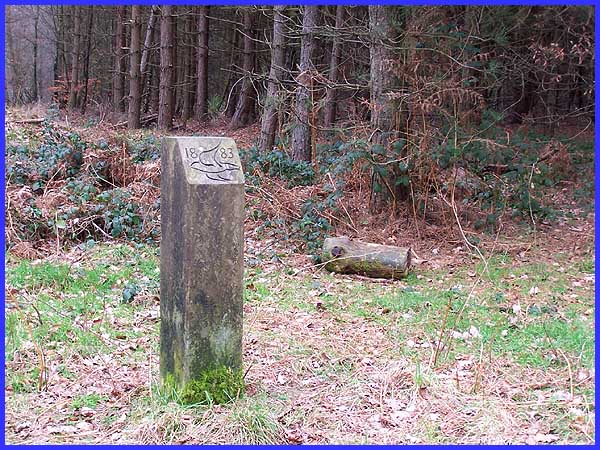
Near the picnic area and by the side of the King's Way is the
Bird Stone. It is very easy to walk past this without a second
glance - as we did - but I eventually did find it. Although it
is not the original Bird Stone it marks the spot where the first
British specimen of an Egyptian nightjar was spotted by A Spinks
on 23 June 1883. The story is that Albert Spinks, a gamekeeper,
had been firing at a rabbit and the sound of his gun startled
the bird. He shot the bird but before disposing of it, mentioned
it to naturalist Joseph Whitaker, who recognised it as a rare
species in Britain. Whitaker had the bird stuffed and it is now
kept at the nearby museum in Mansfield. An Egyptian nightjar
was not seen alive again in the wild this country until one was
spotted in Dorset in 1984.
|
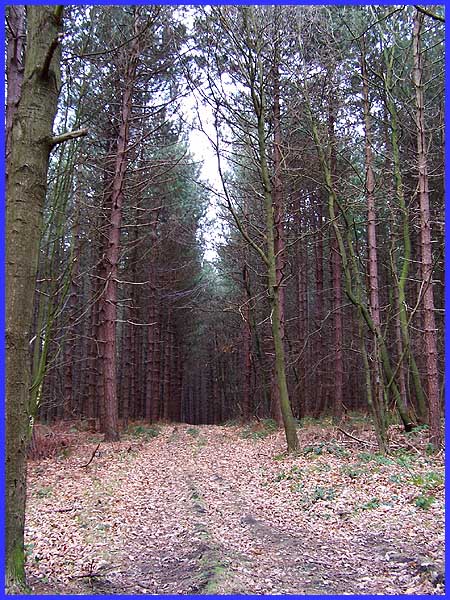
Sherwood Forest and Nottingham of course are synonymous with
the legend of Robin Hood and his Merry Men and tales of robbing
the rich to give to the poor. It is thought that the name Thieve's
Wood for this part of the Forest owes much to the fate of the
travellers along the King's Way and it was not hard to imagine
bands of outlaws lurking in the dense growth as we returned to
the car park, still looking for, but failing to find a single
blue-topped post. One of the Robin Hood stories tells of how
he and his men drove a band of robbers from the woods who were
preying on the people of Ravenshead. It strikes me that the robbers'
descendants have returned and stolen the way markers but we accomplished
a tortuous route back along the forest tracks without mishap!
|

